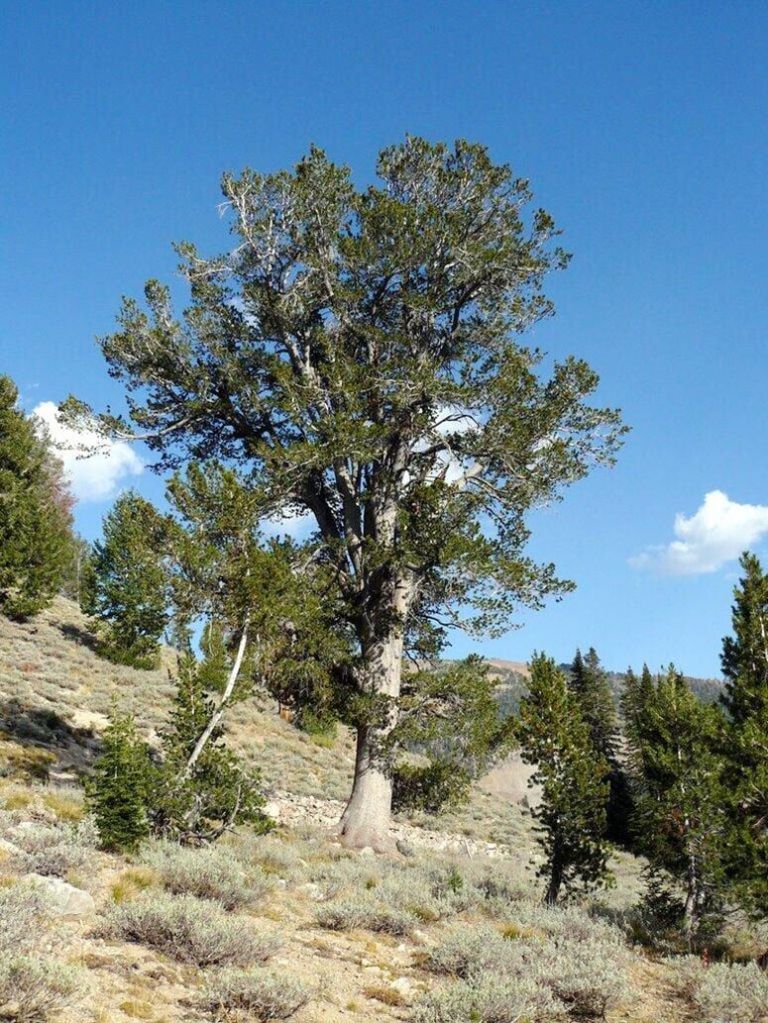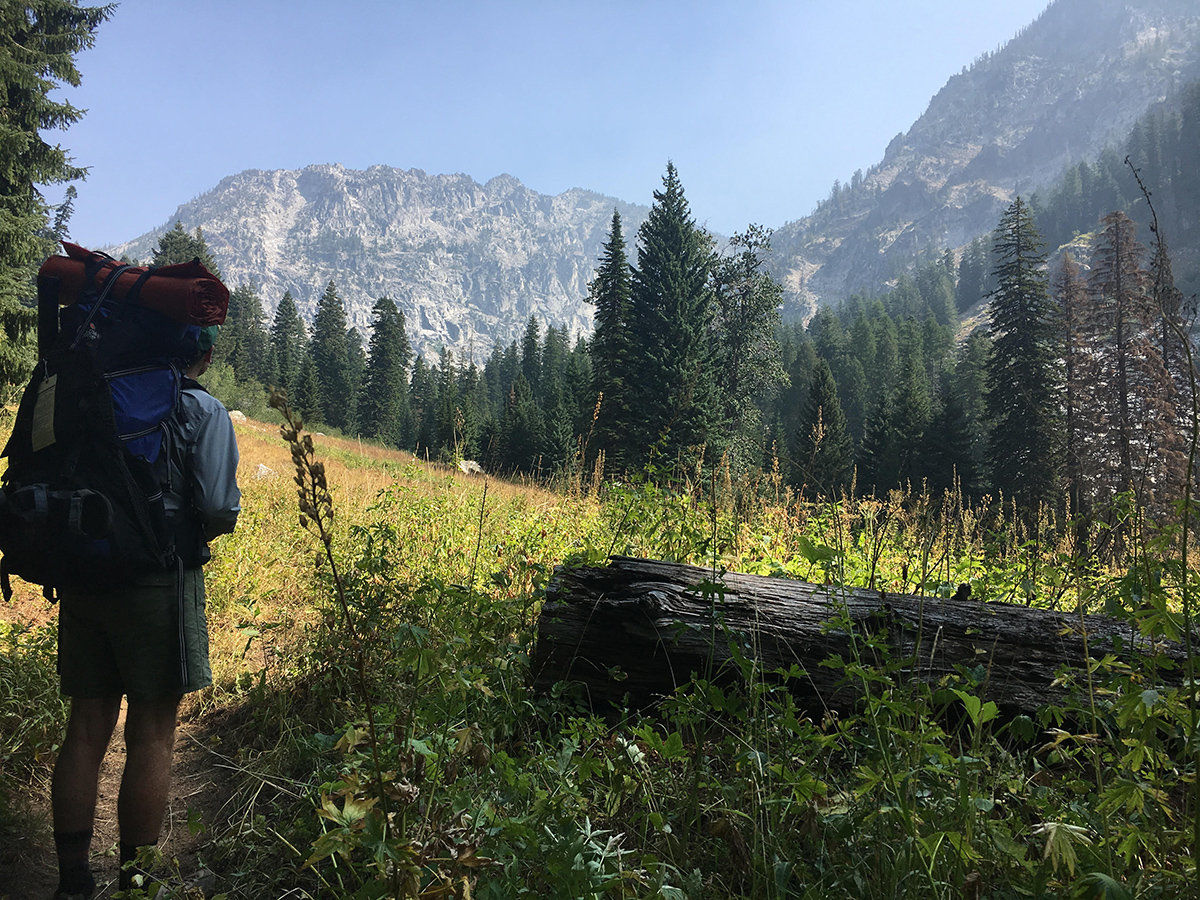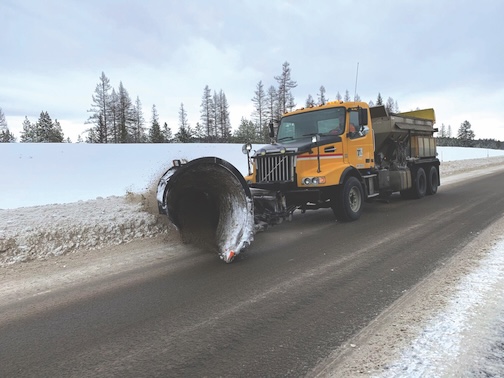Whitebark pine trees threatened, US says
Published 10:10 am Wednesday, December 14, 2022

- Whitebark pine trees, which mainly grow in high-elevation alpine areas, are threatened by diseases and insects, according to the federal government.
BILLINGS, Mont. — Whitebark pine trees can live more than 1,000 years, but in just two decades more than a quarter of the trees that are a key food source for some grizzly bears have been killed by disease, climate change, wildfires and voracious beetles, government officials said as they announced federal protections Wednesday, Dec. 14.
Trending
The U.S. Fish and Wildlife Service will designate whitebark pine as threatened with potential extinction, according to details obtained by The Associated Press. The belated acknowledgement of the tree’s severe decline will require officials to craft a recovery plan and pursue restoration work.
Whitebark pines are found at elevations up to 12,000 feet — conditions too harsh for most tress to survive. They are considered a “keystone” species other plants and animals depend on for survival, and their edible seeds are spread almost exclusively by a bird, the Clark’s nutcracker.
A nonnative fungus — white pine blister rust — has been killing whitebark pines for a century and they’ve been largely wiped out in areas. That includes the eastern edge of Yellowstone National Park, where seeds from the trees are a source of food for threatened grizzly bears.
Trending
More recently, the trees have proven vulnerable to bark beetles that have killed millions of acres of forest, and climate change that scientists say is responsible for more severe wildfire seasons.
The trees occur across 126,000 square miles of land in Wyoming, Montana, Idaho, Washington, Oregon, California, Nevada and western Canada.
Wildlife officials declined to designate which forest habitats are critical to the tree’s survival, stopping short of what some environmentalists argue is needed.
An estimated 88% of whitebark pine habitat is federally owned, with most of that area managed by the U.S. Forest Service.
Just over 50% of standing whitebark pine trees are dead, according to researchers. That includes about 25% that died in the past two decades, said Alexandra Kasdin with the U.S. Fish and Wildlife Service.
Despite the losses, remaining whitebark populations are resilient enough to withstand disease and other problems for decades, she said.
“We have found it is likely to become endangered with extinction in the foreseeable future, not that it is in danger of extinction now,” Kasdin said. “The species is still relatively widespread throughout its extensive range.”
Noah Greenwald with the Center for Biological Diversity said the decision not to designate critical habitat means whitebark stands could be harmed by construction of ski areas or other developments.
“How it’s going to be able to survive in a warming world isn’t totally known, so it would be prudent to identify places likely to be refuges and ensure they get protected,” Greenwald said.
The species is not commercially harvested, but California wildlife officials said timber harvests should nevertheless be considered a threat in areas where whitebark pine are intermingled with other trees. Federal officials said logging could affect individual trees or local areas, but was unlikely to have species-level impacts.
A 2009 court ruling that restored protections for Yellowstone grizzly bears cited in part the tree’s decline, although government studies later concluded the grizzlies could find other things to eat.
That has complicated government efforts to declare grizzlies in the Yellowstone area as a recovered species that no longer needs federal protection. Grizzlies raid caches of whitebark pine cones that are hidden by squirrels and devour the seeds within the cones to fatten up for winter.
Environmentalists had petitioned the government in 1991 and again in 2008 to protect the trees. After getting sued for not taking steps to protect the pine trees, wildlife officials in 2011 acknowledged that whitebark pines needed protections but they took no immediate action, saying other species faced more immediate threats.
The protections adopted Wednesday were proposed two years ago. The final rule includes new provisions that allow members of Native American tribes to collect seeds from whitebark pine for ceremonial or traditional use.
Researchers and private groups are working with federal agencies on plans to gather cones from blister rust-resistant trees, grow the seeds in greenhouses and then plant them back on the landscape.
“There’s hope here,” said Diana Tomback, a University of Colorado Denver biology professor and policy director for the Whitebark Pine Ecosystem Foundation.
“We know how to find genetic resistance to white pine blister rust and there’s a number of whitebark pine trees that have it. They will be the foundation of a planting strategy,” she said.
A draft of the restoration plan is expected early next year.
Some work already has been accomplished, including the planting of nearly 1 million disease resistant seedlings by the advocacy group American Forests, said Elizabeth Pansing the group’s senior manager of western forest science. So far that work “is not happening at the pace or scale needed” to accomplish range-wide restoration, Pansing said.
Future efforts will seek to reseed about a third of the whitebark pine’s range in coming years, Pansing said. Clark’s nutcrackers would then spread seeds from disease-resistant trees across the remainder of the range, according to Pansing and Tomback.
“It may take several human lifetimes, but eventually through natural processes we believe we can restore whitebark pine,” Tomback said.
The whitebark pine is the most common tree at the highest elevations of Northeastern Oregon.
In some of those lofty sites, it’s the only tree.
The whitebark, which like its cousins, the white and limber pines, displays its needles in bundles of five, is almost exclusively a tree of the alpine country.
(Limber pines, which closely resemble whitebarks, grow in the Wallowa Mountains but the species has not been confirmed elsewhere in Oregon.)
Whitebarks rarely grow below 6,000 feet, and they can survive above 9,000.
Their domain in Northeastern Oregon includes the Wallowa, Elkhorn, Greenhorn and Strawberry ranges.
Although whitebarks are much less numerous here than ponderosa (three-needle bundles) and lodgepole pines (two needles), Douglas-, grand and subalpine firs, tamaracks and Engelmann spruces, they can be relatively plentiful within their narrow band of high-elevation habitat.
Around Marble Creek Pass in the southern Elkhorns, for instance, most of the trees are whitebark pines.
Whitebarks can endure for several centuries but, because they live in places with a nearly arctic climate and thin soils, they never attain the lofty height of a ponderosa or a tamarack.
A 50-foot-tall whitebark is a giant. The tallest specimen on record in Oregon lives in the Wallowas and measures 72 feet high, according to “Alpine and Subalpine Vegetation of the Wallowa, Seven Devils and Blue Mountains,” a 2004 guide authored by the late Charles Johnson, who studied whitebarks while working as plant ecologists for the Wallowa-Whitman, Umatilla and Malheur national forests from 1977-2004.
(Johnson, who lived near Baker City, died in March 2007 at age 63.)
Gary Dielman of Baker City has been a whitebark aficionado for decades.
In the early 1990s he found a dead whitebark on the ridge above Summit Lake, in the central Elkhorns near the headwaters of the North Powder River. The tree’s trunk was exposed, polished smooth by sun, ice and wind.
Dielman started counting the rings. When he finished counting, about 45 minutes later, his tally was 800.
Whitebarks are susceptible to both white pine blister rust and infestations of mountain pine beetles.
In 2011, Sabine Mellmann-Brown, the Forest Service ecologist for the three national forests in the Blue Mountains, said the disease and the bugs had killed a significant number of whitebark pines in the region over the past 20 years.
During surveys that summer, Mellmann-Brown and other researchers found that whitebarks were being attacked in several areas, most notably in the Elkhorns, where the infestation rate was up to 90% in places.
Although blister rust can take up to a decade to kill a tree, the disease also weakens pines and makes them much more susceptible to beetles, which can kill a tree in just a month or so.
Pines and a bird
Whitebarks and limber pines both have a symbiotic relationship with the Clark’s nutcracker, gray-and-white, jay-like bird.
Clark’s nutcrackers gather whitebark seeds every summer and store them in caches for their winter food supply.
This is helpful to the pines as well, because the birds disperse the seeds — something whitebarks, unlike some other conifers, don’t do on their own.
In 2011 the Forest Service hired tree climbers to collect cones from whitebark pines. The cones were taken to a Forest Service facility in Bend where the seeds were collected so they can be germinated to raise seedlings to replant whitebarks.
— Jayson Jacoby, Baker City Herald









